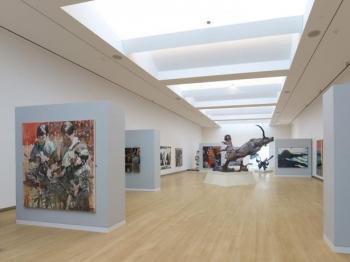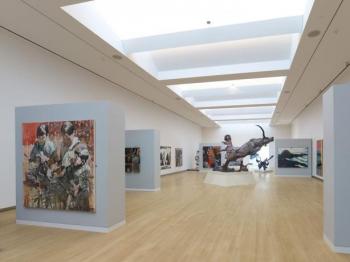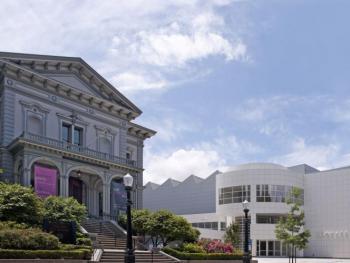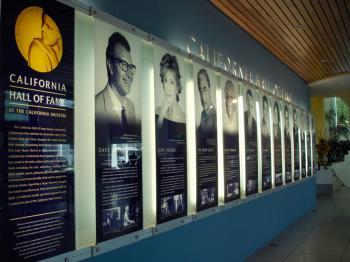Established in 1885, the Crocker was the first public art museum in the western United States. The Crocker family’s love of art and culture and their extensive travel to Europe and Asia resulted in a great collection of Californian, European, and Asian art and an exceptional collection of master drawings in the United States. The museum’s collection has grown into the areas of African and Oceanic arts, as well as international ceramics.
The Expansion
At a special media preview on Sept. 28, Lial Jones, the museum director, gave an opening speech in front of the stunning “Pacific Ocean,” by Jennifer Bartlett, painted in 1984 (gift of AT&T to the Crocker in 2008). The oil-on-canvas painting is 30 feet long and 8 feet tall and could not be displayed in the limited space before the expansion.
“One-hundred and twenty-five years after the Crocker first opened its doors to the public, we have completed an expansion that will enable us to serve our community for the next century,” Ms. Jones said.
The expansion project—the Teel Family Pavilion—was lead by Gwathmey Siegel & Associates Architects, from New York City. The planning and design process started in 2000, had involved Sacramento City officials, community members, and countless professionals. The new expansion’s tripartite design complements the historical Victorian-Italianate gallery building.
From the two-story, open-entry atrium, expansive glass walls allow for full view of the museum’s historic architecture as well as downtown Sacramento. Inside, the Teel Family Pavilion connects directly to the original gallery space, allowing a seamless movement through the whole museum. State-of-the-art materials, lighting, air conditioning, and electronic technologies specialized for museum architecture ensure a good experience for visitors.
The art installation process in the museum began in April 2010 after the construction was finished. With the tripled exhibition space, many of Crocker’s permanent collection can finally be displayed. The expansion features 45,000 square feet of gallery space for the permanent collection and 12,000 square feet for temporary exhibitions.
The Collection
The core of the museum’s permanent collection features Californian, European, and Asian art. Many classical masterpieces from the Crocker family’s original collection found permanent locations in the refreshed historic gallery space.
The visual focus facing the entry is a large painting titled “Village on Fire,” by Carl Wilhelm Hübner (German), painted in 1854. Many such paintings have not been shown to the public for nearly half a century, according to Chief Curator Scott Shields.
The Crocker also holds approximately 1,400 master drawings, which is one of the finest early collections in the United States. Among the 56 pieces currently on display, is “Female Nude With a Staff,” by Albrecht Dürer.
“Light and paper don’t go well with each other. The light will make the paper darker and ink lighter, but your eyes will adjust to the dimmed lights very quickly,” Mr. Breazeale explained. Scholars and researchers of classical drawings can view additional pieces in the adjacent storage and study room.
There is also a growing collection of African and Oceanic art and international ceramics. A ceramics collection recently donated by Sidney Swidler allowed the Crocker’s ceramic collection to be ranked among the top five within the United States.
A Community Cultural Center
The new expanded Crocker not only increased the exhibition space, but also includes an education and teacher-resource center, a 260-seat auditorium, a café with ample indoor and outdoor seating, meeting rooms, and the museum store. The 7,000-square-foot open atrium and courtyard between the historic building and the new structure can accommodate outdoor or after-hour events.
Stacey Shelnut-Hendrick, director of education, is very excited about the new facility. “We now have two large studio classrooms with sinks in them. It’s like heaven for us.” she said.
The atrium and café, with free Wi-Fi service, are open free to the public. Mr. Shields said, “We want you to come to the museum, take your computer, get some coffee, and hang out.” The regular admission for the exhibitions is $10 beyond the atrium area.
Clearly visible from Interstate 5, the new Crocker is a great cultural and architectural addition to the Sacramento region.
For more information, visit www.newcrocker.org.






